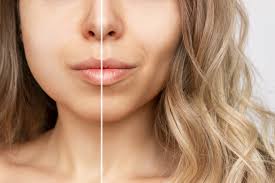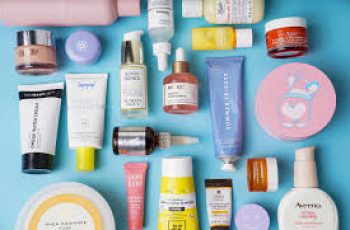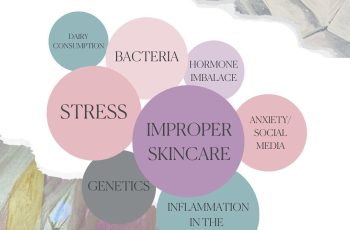
What Is Buccal Fat Removal? What to Expect With the Cosmetic Procedure
If you spend any time on social media checking out the latest beauty trends, you’ve probably heard of buccal fat removal, clinically called a bichectomy or bichectomia.
Posts about #buccalfatremoval — a cosmetic procedure that removes fat in the cheek hollows to give the face a more sharply contoured appearance — have recently topped almost 140 million views on TikTok alone. The topic is also hot on Instagram, Twitter, and Facebook, fueled in part by a slew of unconfirmed rumors about celebrities who’ve done it, including Sophie Turner, Bella Hadid, Zoe Kravitz, Dove Cameron, and Lea Michele. No wonder this cheek-thinning procedure is also nicknamed “Hollywood cheek.”
Buccal fat pads rest between your jaw bones and your cheekbones and help create the shape of your face, per Cleveland Clinic. In-office cosmetic procedures to remove the buccal fat pads can help to emphasize the bone structure in your face by making your cheekbones look more prominent.
Read on to find out what else you need to know about buccal fat removal.
What Is Buccal Fat Removal?
Everyone naturally has buccal fat, as the Cleveland Clinic notes. The exact size of the buccal fat pad can vary, and may appear larger or contribute to a more rounded appearance in some individuals but not in others. People who get buccal fat removal may feel that their face is too rounded and desire a more chiseled appearance.
When people get buccal fat removed, their goal is to thin the cheeks and make the bone structure in the face look more pronounced, according to the American Society of Plastic Surgeons. Also called cheek reduction, this type of plastic surgery helps emphasize the contours of the jaw bone and cheek bones.
“Patients seeking out this procedure are often looking for a slimmer jawline and reduced fullness in the cheeks,” says Mohiba Tareen, MD, medical director and founder of Tareen Dermatology in Roseville, Minnesota. “The benefits are a more contoured face.”
How Does Buccal Fat Removal Work?
Buccal fat removal typically is done as an outpatient procedure using a local anesthetic to numb the skin on the face and surrounding areas, per Cleveland Clinic. Patients typically don’t need general anesthesia unless they’re doing other more complex procedures at the same time.
To do this work, a plastic surgeon makes a small incision on the inside of the mouth on both sides of the face to access the buccal fat pads. Then the surgeon presses on the pads to expose more of this fat tissue and make it easier to cut out and remove either all of the buccal fat pads or a portion of them. After this, the surgeon will place sutures to heal the incision, which may be dissolvable or may require a follow-up visit for removal.
Who Might Consider Buccal Fat Removal?
If you’re thinking about buccal fat removal, know that there are certain things that can make you a good candidate for this procedure, as the American Society of Plastic Surgeons notes. Ideally, you wouldn’t have any serious underlying health problems and you would be at a stable weight. You would also be a nonsmoker.
And if your goal is to achieve results that still look somewhat natural, you may be a better candidate for this procedure if you have a rounder face than if you naturally have a long, thin face. That’s because removing fat on a face that’s naturally thin can make people look unnaturally hollowed out, says Joshua Zeichner, MD, director of cosmetic and clinical research in the department of dermatology at Mount Sinai Hospital in New York City.
This cosmetic procedure is also a better option for younger adults, Dr. Zeichner adds. That’s because middle-aged and older adults naturally lose fat in this part of the face and are less likely to achieve the results they seek by removing buccal fat.
“The procedure gives the face a more gaunt appearance, which many people prefer when they are in their twenties or thirties,” Zeichner says. “However, with age, in the forties, fifties, and above, the face naturally loses its fat. People who have had this procedure tend to develop a skeletonized appearance, much more so than people who left their buccal fat pads alone.”
In fact, many of the patients who undergo buccal fat removal come in later in life for injectable filler procedures to restore volume in the very area where they previously had buccal fat removed, Zeichner says. This happens in everyone, but may be most prominent in people who are thin to begin with.
What Are the Potential Side Effects of Buccal Fat Removal?
According to Cleveland Clinic, some common side effects after surgery can include swelling and bruising on the face and numbness at the incision sites. People typically heal after about three weeks, but it can take several months to see the final results in the shape of the face.
As with any surgical procedure, there are risks. Some risks that can happen with buccal fat removal include:
Infection at the incision site
Injury to facial nerves or salivary duct injury
Numbness or sensation changes
Asymmetry
You should contact your healthcare provider if you experience excessive bleeding, a fever or any other signs of infection, any changes in your sense of taste, or any signs of asymmetry in your face that might mean you’re not healing properly.
While buccal fat removal is generally considered safe, rare serious complications can include shortness of breath, chest pain, or an abnormal heartbeat. If you notice any of these symptoms, immediately seek medical attention or call 911.
Buccal Fat Removal Cost
If you have insurance, your plan isn’t likely to cover buccal fat removal. That said, you may consider shopping around with different board-certified plastic surgeons for the best price. Their experience level, facility fees, and similar factors may affect the cost, which GoodRx estimates is between $5,000 and $20,000.
Alternatives to Buccal Fat Removal
For people who want to achieve a more contoured face without cutting into their cheeks to remove buccal fat, there are some nonsurgical options that can help create a more defined jawline and slim down the appearance of chubby cheeks, Dr. Tareen says.
Many of Tareen’s patients opt for facial injections containing onabotulinumtoxinA (Botox) or abobotulinumtoxinA (Dysport), Tareen adds. When injected into the masseter muscles that run along the cheek and jaw on the sides of the face, this can help create a more sculpted appearance. Others opt for hyaluronic acid facial fillers to define the jaw line and lift the cheek to give an illusion of fullness in that area.
“There are very few risks involved in injectables versus surgery if performed by board-certified dermatologist or plastic surgeon,” Tareen says.
How to Find a Board-Certified Plastic Surgeon
To ensure that your surgeon is well versed in the most techniques to safely and effectively perform buccal fat removal, look for a board-certified plastic surgeon, Tareen advises.
You can find a qualified surgeon by city, state, or country on the American Society of Plastic Surgeons website.


